Muslim Turkey is now working to create nuclear weapons — The world is heading for war, the nations are turning their plowshares into swords
By Theodore Shoebat and Walid Shoebat
In order for Armageddon to spark, the nations must first turn their plowshares into swords. We have been seeing this for several years. Right now it is in its beginning stages, but it is growing. Turkey is pursuing the restoration of its empire. In doing so it is working with both major defense corporations and governments. For, Turkey will never bring back its empire without the help of the West and Japan which is helping Turkey acquire nuclear weapons. What most do not know, is that Turkey has the capacity to make twenty-five Nagasaki level nuclear attacks.
Hans Rühle, the former head of the planning staff of the Federal Minister of Defense of Germany, wrote some very revealing lines:
“the Western intelligence community now largely agrees that Turkey is working both on nuclear weapon systems and on their means of delivery. … Consequently, Turkey has started a large-scale civilian nuclear program, justified by the country’s urgent energy needs. In 2011, Turkey concluded a $20bn contract with the Russian company ROSATOM on a large reactor complex. Two years later, a similar agreement was concluded with a Japanese-French consortium, this time over $22bn. President Erdogan also announced yet another power plant, to be built entirely by indigenous personnel.”
This statement goes contra to the common claim made in Turkey, that the Turkish government simply wants these nuclear power plants just as a source of electricity. The frequently made statement by Turkey, that they want these plants simply for their energy, is a front for something sinister: nuclear weapons. These projects are being done to, ultimately, commence nuclear armament. As Ruhle writes: “a thorough analysis of the contracts reveals that these projects are not just about improving Turkey’s energy supply. Turkey has also consciously opened the door to a military nuclear option.”
In deals between governments and nuclear production companies, the company agrees to control the operation for decades, to provide enriched uranium, and to take back the spent fuel rods. This was not the case in the agreement between Turkey and nuclear companies, ROSATOM and the Japanese-French joint venture Atmea. In the words of Ruhle:
“Turkey insisted that the deal would neither include the provision of uranium nor the return of the spent fuel rods. Ankara wanted to deal with this matter separately at a later stage. Turkey never provided an explanation for this decision. However, the intention behind this unusual maneuvering is not difficult to fathom. Turkey wants to maintain the option to run the reactors with its own low enriched uranium and to reprocess the spent fuel rods itself. This, in turn, means that Turkey intends to enrich uranium, at least to a low level.”
Turkey is planning to do twenty-three projects for nuclear power plants with enriched uranium, showing just how large their aspirations are. Turkey wants to keep spent fuel rods, but if this is because it wants to use them for strictly energy purposes, then why use these when it is far cheaper to use “new” uranium as opposed to used uranium? That Turkey wants to keep spent fuel rods indicates that these nuclear plants are not being used simply for energy, but for nuclear weapons production. As Ruhle affirms, the fact that Turkey refused to return the spent fuel rods, shows that they are pursuing nuclear armament.
One common argument is that the production of nuclear weapons would require a complex reprocessing plant that currently does not exist in Turkey. But such a plant could be built in only half a year, and Turkey has the capacity to do so. Another common argument is that in order to produce nuclear weapons you would have to have weapons grade plutonium with an impurity level of at most 7 percent. But in 1945, General Groves, the head of the “Manhattan Project,” said that because of the lack of pure plutonium, the US would soon have to use material with an impurity level of up to 20 percent. In 1962, the United States detonated a plutonium bomb in Nevada, and it had an impurity level of 23 percent.
“The Iranian reactor Bushehr offers a telling example. If the reactor were powered down after eight months and the fuel rods removed,” writes Ruhle, “Iran would own 150 kilogrammes of plutonium with an impurity level of only 10 percent—the equivalent of twenty-five Nagasaki-category bombs. In short, the weaponization of plutonium has many facets.”
In fact, Turkey partook in the activities of the Pakistani smuggler of nuclear material Abdul Qadeer Khan, who between 1987 and 2002, sold thousands of centrifuges to Iran, North Korea and Libya. What was the source of all of the electronics of these centrifuges? Turkey. Khan actually even entertained the idea of bringing his entire criminal nuclear production to Turkey. And in 1998, Nawaz Sharif even offered Turkey a “nuclear partnership” on nuclear research.
Turkish officials have made statements that imply Turkey’s desire for nuclear weapons. For example, Abdullah Gul once said: “Turkey will not allow that a neighbouring country [Iran] has weapons that Turkey itself does not have.”
Turkey’s possession of nuclear material appears to be connected with the criminal underworld of illegal trafficking. According to German intelligence, Turkey acquired enriched uranium that was smuggled from a former Soviet Union State through Kosovo and Bosnia and Herzegovina with the help of the mafia.
The illegal trafficking of nuclear, and other radioactive material, began to become a serious concern in the world after the fall of the Soviet Union in 1991. The criminal underworld in the New Independent States of the former Soviet Union (NIS) saw the selling of nuclear material as an excellent source of revenue. In the 1990s, there was a sudden increase in the trafficking of nuclear material — plutonium and uranium — in Europe. Criminal dealers from former Soviet states travelled to Europe looking for buyers of this material that they had, supposedly, stolen, especially from facilities in Russia.
Such a market was successfully disrupted by European intelligence and security services, especially in Germany. German undercover agents, acting like buyers, busted the dealers and the German government seized the nuclear material. Russia later acknowledged that it did not have efficient security to prevent these nuclear materials from being taken by traffickers. Tightening measures were taken by the Russian government and this led to an overall decline in illegal trafficking of nuclear material since 1994.
However, while Europe is still minor for this illicit trafficking, criminal sellers of nuclear materials have found a bigger market, in Turkey, the Caucasus and Central Asia. “Despite these trends,” writes Lyudmila Zaitseva, “Europe may still be used by sophisticated nuclear trafficking networks, whose activities have escaped detention. This possibility is hinted at by the July 2001 seizure in Paris of a 5 gram (g) sample of highly enriched uranium that may have come from the NIS. Still, in the past few years the movement of nuclear material from the NIS appears to have shifted southward to the borders of the Caucasus, Turkey and Central Asia. Analysts have long speculated that nuclear smugglers would exploit this region known as the southern tier, which includes the three Transcaucasian (Armenia, Azerbaijan, and Georgia) and five Central Asian republics (Kazakstan, Kyrgyzstan, Tajikistan, Turkmenistan, and Uzbekistan), as a transit corridor. Turkey, which borders on the Transcaucasian region, has also been regarded as a likely smuggling route.”
One of the reasons why these regions are popular for traffickers is that they are close to the Middle East and South Asia, where there is a high demand for these nuclear materials amongst terrorist organizations and states. Moreover, since 1991, Turkey, the trans-Caucasus (Azerbaijan, Armenian and Georgia), and Central Asia, have become major transport routes for weapons, drugs, and other illegal materials. Border patrol here is notoriously lax, and government officials are known to be very corrupt. All of this creates the perfect conditions for illegal smuggling to thrive.
Illegal nuclear trafficking in the Caucasus began in the early 1990s. The Black Sea and Caspian Sea ports have been used as routes for illegal drugs from Afghanistan, to Russia and Europe. This region also became a spot of major weapons smuggling into the conflicts in Nagorno-Karabakh.
In July of 2000, a lieutenant colonel in the North Ossetian police, and a citizen of Azerbaijan, were caught in Vladikavkaz holding 1.5 kg of low-enriched uranium in a garage. In June of that year, the Azerbaijani travelled to Turkey with a sample of low enriched uranium and even found a buyer. He used a false Russian passport and carried nuclear material from Russia all the way to Turkey. According to Zaitseva, “the case involved an international ring consisting of Russian suppliers and middlemen, and Azerbaijani trafficker, and buyers in Turkey. … the smuggling ring included a corrupt official, the police colonel, whose authority helped implement the operation. For example, he transported the uranium from Russia to Georgia in his car undetected, because border guards did not dare check the car of a colonel in a uniform.” The Azerbaijani smuggler was able to travel across the borders of Russia, Georgia and Turkey, holding nuclear material, without any problems at all.
TURKEY AND ATMEA
One of the nuclear plants that will be established in Turkey is the Sinop, which will be built by Atmea, a joint venture nuclear company between a French company, Areva (now called Orano), and a Japanese company, Mitsubishi Heavy Industries (MHI). Areva and Mitsubishi Heavy Industries signed a memorandum of understanding to form a joint venture on October 19th 2006 in Tokyo, for the creation of their nuclear reactor, the Atmea1 (the type of reactor that they will be building in Turkey). They announced the establishment of the joint venture in September of 2007. Kazuo Tsukuda, who was then the president of Mitsubishi, said of the joint venture: “By bringing together the state-of-the-art technologies of both companies, we are confident that Atmea 1 will be the leading plant in the mid-size reactor range, and will be successful in attracting interest from our clients.”
Kazuo is the co-chairman of the BRT, or the EU-Japan Business Round Table, which has been working on the creation of a free trade zone between Japan and the European Union, which would be the largest free-trade in the world.
In the 17th annual meeting of the EU-Japan Business Round Table, which took place in April of 2015, Kazuo said:
“I feel truly fortunate having become co-Chairman of the BRT this year, as the EU and Japan are getting very close to concluding a comprehensive and promising FTA/EPA…. It is time now to redouble our efforts to clinch a fruitful, mutually beneficial FTA/EPA during this year.”
If and when the European-Japanese free trade zone materializes, it will be larger than NAFTA. While the Europeans and the Japanese will be establishing a free-trade zone between their regions, the Japanese and the Turks have also been working on creating a free trade zone between each other. In 2017 the Foreign Minister of Turkey, Mevlut Cavusoglu, in a joint press conference, declared that: “Japan is our biggest economic partner in the Asia-Pacific region,” indicating the deep economic relationship between Japan and Turkey. Erdogan himself said that Turkey and Japan “agreed to launch negotiations for a free trade deal between the two countries.”
Since Japan and Turkey want to establish free trade between each other, and the EU (headed by Germany) and Japan will have free trade between each other, it appears there will be free trade between all three — Turkey, Japan and Germany. The policy of free trade between Japan and the EU is not just about financial advancement, but militarism as well.
In June of 2017, there was held the EU-Japan Summit in Brussels. In the press conference for the event, the president of the European Council, Donald Tusk, spoke indirectly about the EU’s measures against what he called “the fears and anxieties of our people, which are often justified”, and although he was quite oblique in his language, it is obvious that he was speaking of mistrust for the Americans and the British. He also said: “we made decisions about how to improve our trade defence instruments. Not to cut Europe off from the rest of the world, but to be able to conduct effective trade.”
He also spoke of how “some are saying that the time of isolationism and disintegration is coming again,” making an obvious alluding to the feeling that has been lingering in the air, that America appears to becoming more isolationist. He also referred to the British voting to leave the EU, saying: “In the context of the discussion about Brexit, we have heard statements claiming that it isn’t worth being in the European Union”. It appears that Tusk is referring to the sentiment that has been being expressed in Europe: we cannot trust the Anglosphere — the Americans and the British — and it is up to us to direct ourselves to becoming a power in globalization. This is reflected in the words of Merkel herself: “The times in which [Germany] could fully rely on others are partly over. I have experienced this in the last few days … We Europeans really have to take our destiny into our own hands.”
This sentiment was further reflected in a recent article published by the major German publication, Deutsche Welle, which stated:
“After the end of the European Defense Community (EDC) in 1954, plans for a European army were put on the back burner for decades, until recent events revived the idea. US President Donald Trump’s lack of interest in Europe, the increased threat posed by Russia and the UK’s looming withdrawal from the EU have given the military project new impetus.”
In a document from the 2018 Munich Security Conference, entitled, Present at the Erosion: International Order, there is a telling statement on how Trump and Britain are causing the “international order” to become volatile, and that the European Union could bring back stability to the order:
Again, Trump is the most important symptom of a broader trend – but not the only one. A new nationalism is on the rise in many parts of the world. However, “America first” and Brexit may have the welcome effect that other stakeholders in the liberal order try to make up for less internationalist Anglo-Saxons. But how quickly can they do so even if they wanted to? Canada, Germany, France, or Japan – often seen as the remaining middle-powers with a clear commitment to and major stakes in a rules-based international order – all lack both the material capabilities and ambition to step in. The European Union as a whole could play a stabilizing role for the liberal international order
Lets not forget that Germany is the most powerful country in the EU, so when this document speaks of the European Union, it is speaking of a body of countries with Germany at its head. And when it speaks of the EU playing a “stabilizing role” in the “international order,” the fact that this is being said for a security conference — which means it is on military might and necessities —, and the fact that Ursula van der Leyen spoke about advancing Germany’s military might in this same conference, it is obvious that this statement, beyond its diplomatic language, is speaking of Germany becoming a dominant military power in the world. Also notice how the statement above says that “‘America first’ and Brexit may have the welcome effect” — in other words, they want to use Trump and Brexit as justifications for their militarism. Trump plays a key role in allowing the trojan horse that they are looking for: the pretext for militarization.
Germany is taking this political climate to further military integration between EU countries. This began in early 2014, when the Dutch 11th Airmobile Brigade was attached to the Division Schnelle Kräfte (German Rapid Forces Division). This happened again in 2016 when Germany’s Panzerbataillon 414 (414th Tank Battalion) was attached to the Dutch 43rd Mechanized Brigade. German Defense Minister Ursula von der Leyen acclaimed this military integration as a “prime example of how to build a European defense union.”
Just this year, the entire German Seebataillon (Naval Forces Protection Battalion) — which has about 800 troops — was added to the Dutch Navy. Germany just recently established the European Defense Fund, to fund defense companies to produce military technology. Not surprisingly, a German defense company, Rheinmetall, has been the first company to be given funds by the European Defense Fund. As we read in one report:
“Rheinmetall is the first company to be awarded funding under a newly established European Commission defence initiative, which will enable the company to lead the development of soldier system architecture.
A request for proposals for the Generic Open Soldier Systems Reference Architecture (GOSSRA) project was won by Rheinmetall, the company announced on 19 February. It will lead a consortium consisting of partners from nine different EU countries, the company says.
GOSSRA is one of the first initial projects to be funded under the EU’s European Defence Union, and will see open reference architecture developed that will ultimately be the basis of EU-wide standardised soldier systems.”
This is not surprising, given that Rheinmetall is a major partner with Turkey, working to build tanks and other weaponry for the Turkish military, as we showed in one of our last articles on this subject.
The Germans, while acknowledging NATO, have been arguing for a pan-European defense force, for the security of Europe itself. As the Japanese have been pushing for military independence from the United States, so the Germans have been pushing for military independence from NATO. Just recently, Germany’s defense minister, Urusula van der Leyen, in an interview in the Munich Defense Conference, spoke of the European Defense Fund, a military command for a pan-European military force, and the need for EU troops to be in Africa:
“What is important for me is its no competition to NATO, its complementary. NATO will always be collective defense. But there are other tasks, if I just look at Africa for example. There are other tasks where Europe is needed. And up to a few months, Europe wasn’t able to act at all because we didn’t have neither the procedures nor the structures. Now we are establishing those with a military command, with a European Defense Fund, just to name some examples, so that we are able to act for our own security too.”
Notice what van der Leyen says in the beginning of the video: Germany’s military advancements is about sending a message “across the Atlantic,” meaning to the United States. In the 2018 Munich Security Conference, Ursula van der Leyen sent another message to the US, stating that Europe (that is to say, Germany) must have more military might, and must be “more European”:
“Last year I was able to open this conference with my colleague Jim Mattis . Today I open with my French colleague, Florence Parly. Both are expressions of German politics: We want to remain transatlantic – and at the same time become more European. It is about a Europe that can also throw more weight militarily in the military. … The beginning is made: we have launched the European Defense Union. We have set out politically to create an ‘army of Europeans’! … And we need a common strategic culture of Europe. A common European understanding of our interests, our goals and our instruments of external action. Only then will Europe gain the necessary weight.”
The nature of Germany’s plan is obvious: it is pan-European, Euro-centric, and makes it quite clear that it wants to be militarily independent of the US. Later in the same talk, van der Leyen said: “We will continue to invest and modernize.” This signifies a very simple action by the German government: they are going to continue to advance the military capabilities of Germany. We are not arguing that the current German government is now going to do imperialism. Rather, that the current German government is setting up the conditions by which, in the future, Germany will return to the warpath.
Van der leyen ended her speech with a very interesting statement:
“If Germany as a well-established democracy does not hide behind its history, but accepts that soldiers must fight for security and freedom. Conversely, if development cooperation is no longer a “nice to have”, but a tough “must”. So if security and development are no longer opposites but soldiers and police officers, teachers, doctors and lawyers plan and work together; if national egoisms do not win, but the cooperative world order – then our children may say: you have used your time well.”
While van der Leyen says that “national egoisms” must not be entertained, she affirms that if Germany will no longer “hide behind its history” and accept that “soldiers must fight for security and freedom” and that soldiers and all Europeans in their professions work together, then posterity will say “you have used your time well.” In other words: we as Germans can no longer use our imperialist and genocidal history as an excuse to not increase our military. Ursula van der Leyen sounds no different than a German identitarian or an Alt-right activist who insists that Germany should no longer hide behind its holocaust past and pursue the road to glory.
As we have been saying since 2016, Germany is using the so-called migrant crises as a pretext for its increase in militarization. In a document from the 2018 Munich Security Conference, it reads: “In Europe, the inflow of migrants and refugees is increasingly the lens through which military engagement and development aid is seen.” This using of the migrant crises to boost up the Germanic military industry was also done by the new chancellor of Austria, Sebastian Kurz, who recently said: “If (redistributing refugees) isn’t possible, then they should be helped in safe areas on their own continent … The EU should support that, perhaps even organize it, and back it militarily.”
Harold James, in a 2017 paper from the German Marshall Fund, reads that the migration crises can “offer the EU a chance to establish Europe as a global leader. … Military security, cyber security, energy security: these are areas where Europe should take an example from the great era of American success in the late 20th century.”
With the destabilization of the Middle East through NATO policy, we are now seeing NATO countries, like Germany and Turkey, using terrorism, and the problems that come from mass migration, as propaganda ploys to justify their own militarisms.
In a document from the 2018 Munich Security Conference, entitled, EU: Union Crack?, it speaks about the EU’s advancing of its own unified military force, how the Germans and the French are developing a European jet fighter, the increase of funding for research for military technology. All of this shows a pursuit for European military independence from the United States:
“The German and French governments agreed to jointly develop the next generation of fighter jets. And the European Commission launched its “European Defence Fund,” in support of European defense research and procurement. Due to rising defense budgets, European leaders now have the opportunity to build more European, more connected, and more capable forces that are needed to defend the interests of 500 million Europeans.”
If there is going to be “no war” in Europe, as the optimists say, then why turn your plowshares into swords?
In order to show that the European Union does not need the United State, or the British, to expand its free trade zone, the EU has made an agreement with Japan to establish an EU-Japan free trade zone. “Although some are saying that the time of isolationism and disintegration is coming again,” says Tusk, “we are demonstrating that this is not the case. That the world really doesn’t need to go a hundred years back in time. Quite the opposite. It doesn’t have to be so. As we are proving with Japan.”
In May of 2015, there was the Japan-EU Summit in Brussels, in which they issued their joint press statement, which stated an agreement between the Europeans and the Japanese not just in an economic context, but in a military context as well:
“We are conducting joint efforts to build peace, security and stability around the globe, by reinforcing our bilateral partnership and shouldering greater responsibilities for regional and global security.”
“Regional and global security,” in the world of indirect jargon, means the use of military force in conflicts occurring in regions. This could mean a conflict between Japan and China, which are in the East Asia region, or a conflict between Germany and Poland, which are in the Central European region.
The statement also spoke of the agreement between Japan and the EU on a “Free Trade Agreement (FTA) that will deepen our cooperation and enhance our common prosperity.” This free-trade agreement will create the largest free trade zone in the world, and will greatly rival the US economy. The document agreed upon between Japan and the EU also says: “The EU welcomes and supports the efforts of Japan in promoting and sustaining global security as set out in the policy of ‘Proactive Contribution to Peace’ based on the principle of international cooperation.”
This term, “proactive contribution to peace,” simply means Japan aggressively (proactively) making an attack on another country that it deems as its enemy. One of the mouthpieces for “proactive contribution to peace” is Akiko Fukushima, a member of Prime Minister Abe’s Advisory Panel on National Security and Defense Capabilities, and a Senior Fellow for the Tokyo Foundation. In an article written for the Tokyo Foundation, Fukushima wrote in favor for European Japanese collaboration in military operations, writing: “Japan and the EU should be fighting alongside one another, rather than against each other.”
What we are witnessing is the collaboration of major governments — Japan, Turkey and Germany — and corporations — Mitsubishi, Atmea, and Rheinmetal — to accelerate the militarization of their countries.
In talking about the rise of militarist Turkey and Germany, we cannot ignore the historical reality of these countries. One of the best examples of the horrors of war, is the battle over the Dardanelles, between Britain and France (the Entente), and the Ottoman empire and their German ally.
The Dardanelles is a strait that runs forty-one miles from the Mediterranean to the Sea of Marmara, where Constantinople lies. The city that was founded by Constantine who built the city to be, unlike Rome, not on the foundation of idols, had been controlled by the Ottomans for five centuries at that point, and the British, the French and the Russians, wanted to invade it.
Field Marshall Horatio Herbert Kitchener, the secretary of state of war, called for a naval attack on the Ottomans in the Dardanelles, with the intent of taking Istanbul. Kitchener wrote to Churchill that: “The only place that a demonstration might have some effect in stopping reinforcements going east… would be the Dardanelles”.
The Ottomans and the Germans focused most of their efforts in guarding the narrowest part of the Dardanelles, a fourteen mile stretch from the Mediterranean to the Sea of Marmara. They placed under the water long nets to prevent the movement of enemy submarines, and placed hundreds of mines to make the Strait impassable for British and French ships.
Admiral Sackville Carden, the British naval commander in the eastern Mediterranean, told Churchill that while it would be very difficult to pass through the Strait, that it could be done by “extended operations with a large number of ships”.
Without getting into all of the details of the horrific battle, the whole situation was a nightmare. On February 19th, 1915, the battle began. The British and French ships opened fire on the Turkish fortifications around Seddulbahir and Kum Kale, from five to eight miles offshore, with no problems. It appeared as though the Ottomans were badly hit by the fire. The British got overly confident.
They began to move close to the coasts. The Turks returned fire, forcing the British fleets to flee. What proved to be the greatest threat to the Allied ships were the mobile batteries that were not something that the Ottomans brought on their own, but were introduced to the Ottomans by the Germans. These mobile batteries were the howitzers, that would fire from behind the hillsides, flanking the Allies and dropping shrapnel on the British and French decks, bringing heavy amounts of death. This is the whole point of bringing up this history: If it were not for German technology, the Ottomans would not have won against the British in the battle over the Dardanelles.
One French naval officer complained about the German batteries: “Those nasty cannons make no smoke, are very small, highly mobile, and I have no advice to offer in locating them”. One blast from a howitzer slaughtered twenty French sailers who were aboard the cruiser Amethyst. Because the guns were mobile, before British pilots could report on their locations, the Ottomans would move them to different areas in total safety.
Another thing that proved very dangerous was the mines that were placed on the narrowest part of the Strait, between the Kepez Point and the Narrows. The Allies wasted weeks passing through the widest part, and thinking that their efforts were easy, they were shocked by the tremendous danger of the mines. The Germans set up the mines, and purposefully put them on the narrowest part to make the Allies think that they were having it easy on the widest part of the Strait. One French naval officer wrote: “In spite of our very precise information … on the position, number and density of the lines of mines, we have yet to find a single one”.
Winston Churchill, without regard to the loss of human life, purposed that the ships just go right through the narrow part of the Strait, and if a high number of deaths come about, what mattered was results. “If success cannot be obtained without loss of ships and men, results to be gained are important enough to justify such a loss,” wrote Churchill to Admiral Carden on March 11th. He went on to write: “Every well-conceived action for forcing a decision, even should regrettable losses be entailed, will receive our support.”
On March 15th, Admiral Carden, obeying Churchill, ordered that the ships force themselves through the Narrows, where German guns and mines abounded. On March 18th, 1915, there commenced a battle which, in the words of a German officer, was “the greatest battle which had ever taken place between floating ironclads and land batteries.”
The Queen Elizabeth, one of the six largest ships in the Dardanelles, fired on the Turkish forts. Small abandoned wooden houses in Canakkale and Kilitbahr, were set ablaze, burning with fire as ships and howitzers fired on each other for ninety minutes straight. After this, the French made their attack. The French ships, the Suffren and Bouvet, were struck by the howitzers, driving them away and forcing the French to call for fresh British ships to join the fray.
As the Bouvet was on retreat, making its way out of the straits, it was forced downstream by a strong currant. As the chaos was occurring, the Bouvet hit a mine in Erenkoy Bay. The explosion ruptured through the hull of the battleship, and blew right through the starboard. Out of the 724 sailors on board, only sixty two survived.
Some hours later — at around 4:00 pm that day — the British ship, the Inflexible, hit a mine, and almost right after this happened, another British ship, the Irresistible, also hit a mine. Ocean, another British ship, came to the Irresistible’s rescue, but on its way was struck by a mine. The Turks, seeing all of this havoc, intensified the firing of their German guns. They aimed at the Suffren, and with one blast slaughtered twelve sailers and almost sunk the vessel. The Ottomans opened fire on the Gaulois, and it began taking in water.
The Inflexible managed to escape, and the crewmembers of the Ocean and Irresistible were rescued from their ruined ships. Admirable de Robeck raised the flag of retreat. It was the first Ottoman victory in World War One. “Padisahim Cok Yasa!” “Long live the Sultan!” the Turks cried in jubilation. Over a thousand British and French lives were lost, three battleships were sunk, and hundreds more were wounded. So much for Winston Churchill, who wanted the ships to go through as sacrifices, not caring about however many lives were lost. And the victory of the Turk was due to German technology.
When the Allies fought the Ottomans in the Gallipoli point, Australian and New Zealander troops had no support from their navy, because the German U-boats were picking off their ships. On May 25th, the German submarine U-21 torpedoed and sunk the British battleship, Triumph, in order to stop its firing on Ottoman positions on the Anzac Cove. Seventy three British sailors died. Days later, the same German submarine struck and sank the the HMS Majestic, killing forty-nine men. Churchill was, understandably, removed from his position as Lord of the Admiralty.
But the damage was already done.
The Australians and New Zealanders had to fight off the Ottomans without any naval support. The battlefields of Gallipoli were valleys of horror. Men were terrified to just lift their heads up, knowing that just one inch up could mean getting hit by Turkish snipers. And when the men were deprived of the sun’s light, and darkness ruled, the Turks made their night attacks. Sergeant Moriarty remembered how the Turks rushed him and his men in the night: “They crept right up to our trenches (they were in the thousands) and they made the night hideous with yells and shouting Allah, Allah. … When the Turks got to close quarters the devils used hand grenades and you could only recognize our dead by their Identity Discs,” the round dog tags that British troops wore.
Disease ran rampant in the trenches. Soldiers were too terrified to defecate outside of their positions, and so relieved their bowls in their own trenches. Flies came and spread disease. Thousands died from this.
But not all of the British and the Turkish soldiers hated each other. There were times when Ottoman soldiers would throw cigarettes, raisons, hazelnuts and almonds at the British trenches. The British, in turn, would throw cans of fruit and jam back at the Ottomans. And no one ever mixed dirt with their gifts. When a British soldier soldier was caught in the crossfire, an Ottoman soldier, feeling compassion for him, tried to save his life and pull him away from the bullets. The Ottoman ended up getting shot in the arm and leg. A British medic, Sergeant Henry Corbridge, treated the wounds of the Turkish good samaritan.
Private Robert Eardley stopped a British soldier from killing a wounded Ottoman soldier. After this, he treated the Turk’s wounds in the trench. “Poor fellow,” said Eardley as he wrapped a bandage around the Turk’s head. When Ottoman troops flooded the trench, Eardley was made to stay to make sure that all of the British troops managed to retreat. A Turkish soldier bayoneted Eardley in the shoulder. “I felt a sharp piercing sensation — a burning feeling at the back of my left shoulder. I knew I had got the bayonet. … I distinctly felt the thrust and drawing out.”
Eardley fell on his face, amongst the dead and wounded. He was awakened by the feeling of dirt hitting his back. Ottoman soldiers were burying him. He got up, dizzy and disoriented, only to find himself surrounded by bayonets. The wounded Turkish soldier that he later rescued leaped on him, to protect him. The Turk then rose up and explained to the Ottoman troops how Eardley saved his life. An Ottoman sergeant then told Eardley: “English get up, no one will harm you — you would have died only for this soldier — you gave him water, you gave him smoke and you stop bleed (wound from bleeding) — you very good Englishman”. His act of compassion saved his life.
Reading about the horrors of war, one cannot help but say that God does not want such evils happening. War is a curse from God. Acts of compassion are seen in war, because men rebel against the unnaturalness of violence. Our evils will bring us back to the very horrors that our ancestors had to undergo. Man lives in a cycle of destruction. He is evil one moment, and war comes, he — realizing the errors of humanity — forsakes past vices. Posterity forgets the travails of the past, and so must endure the same evils.



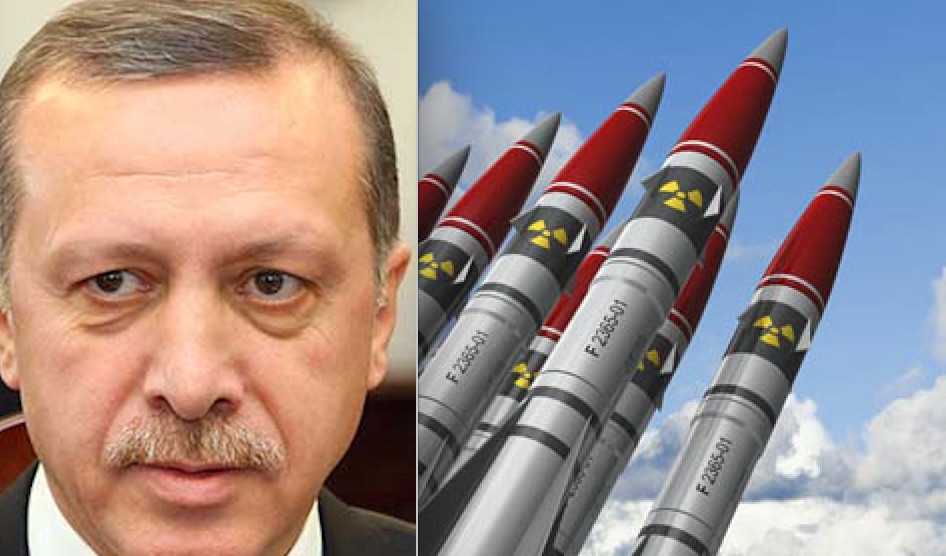
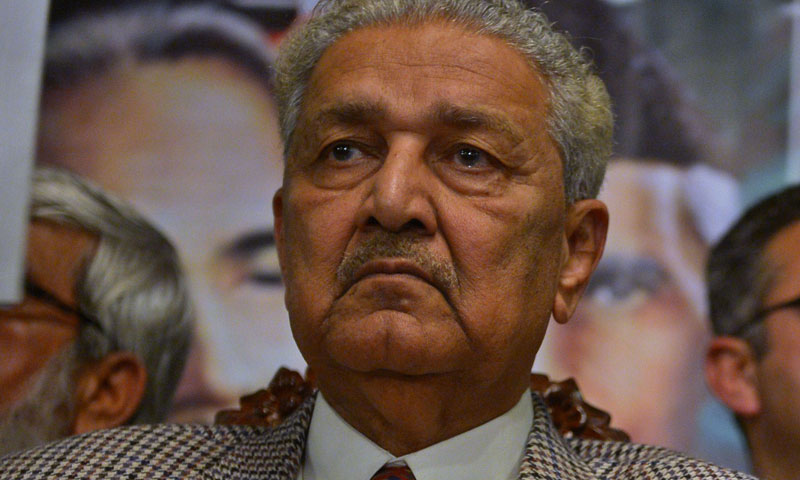

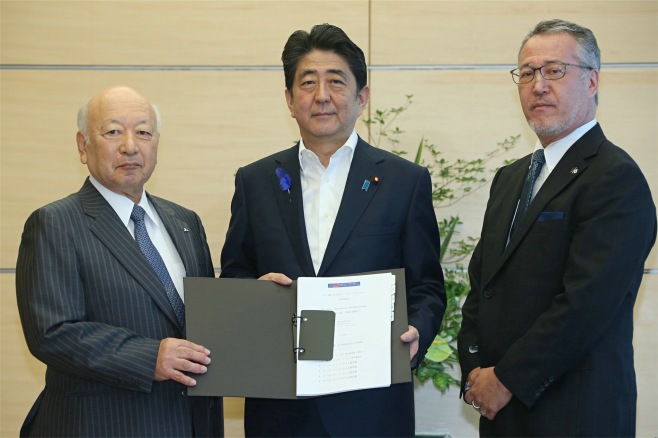

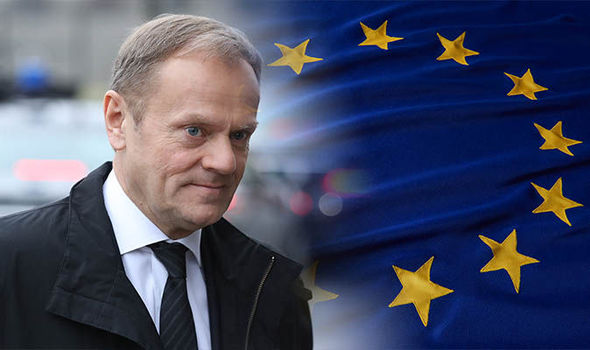
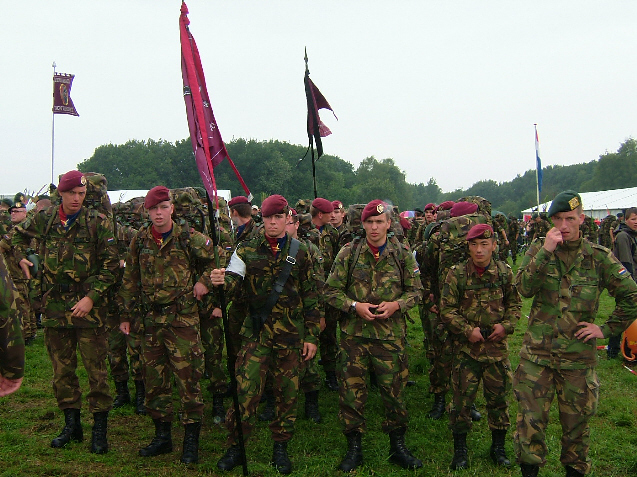
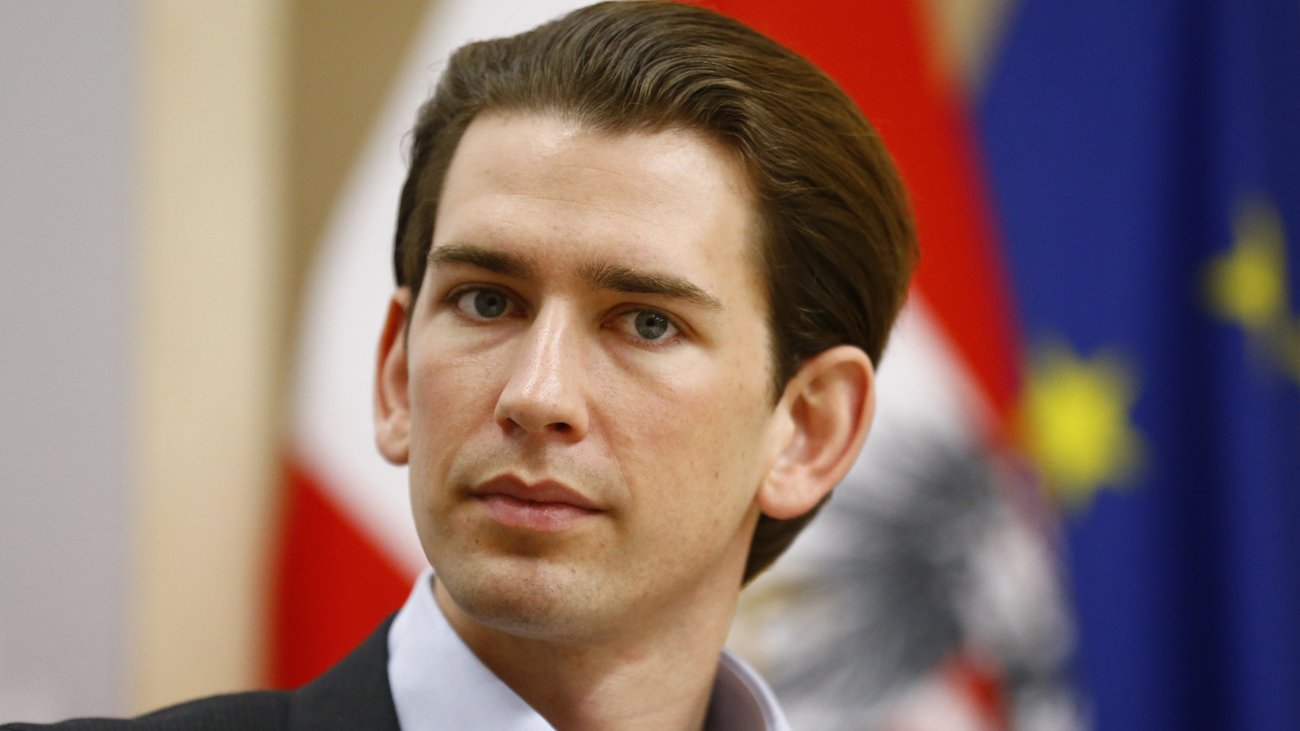
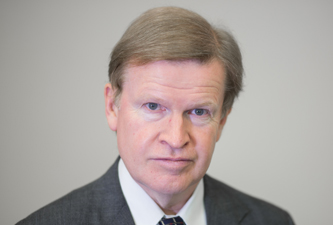
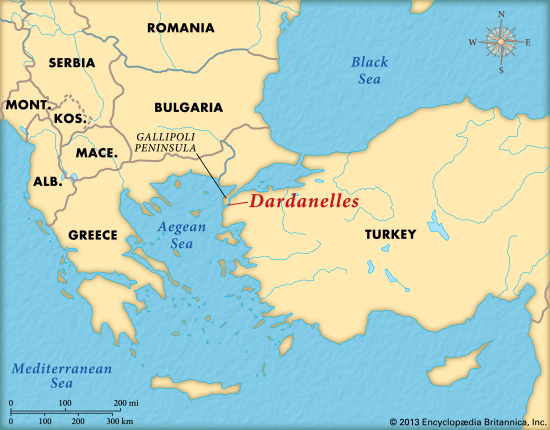

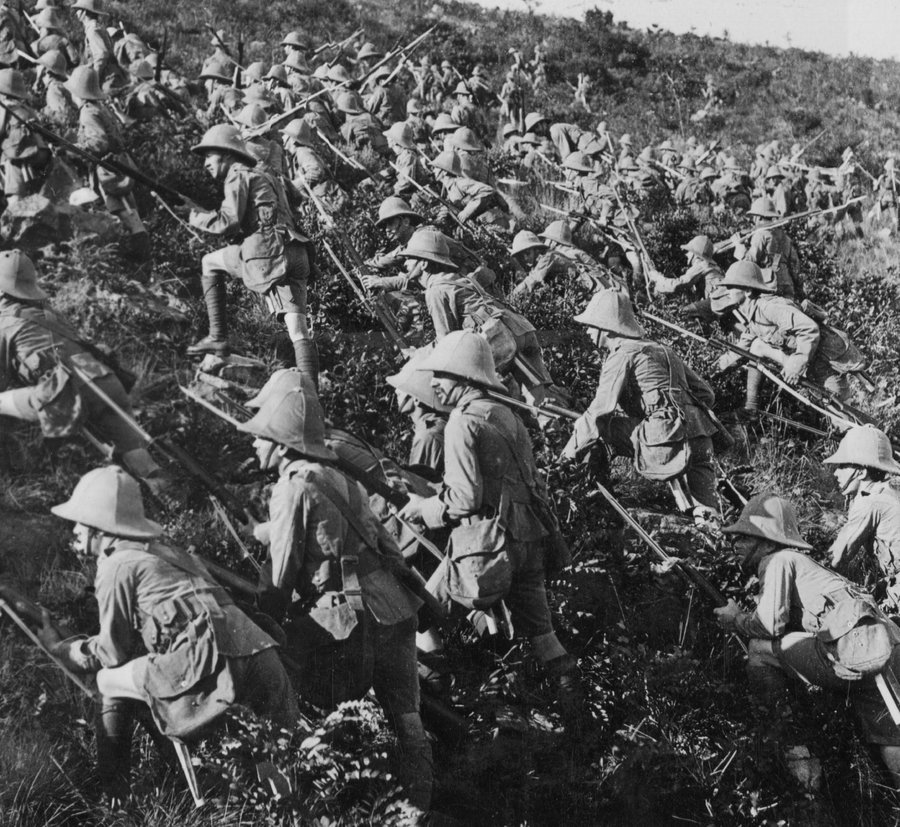
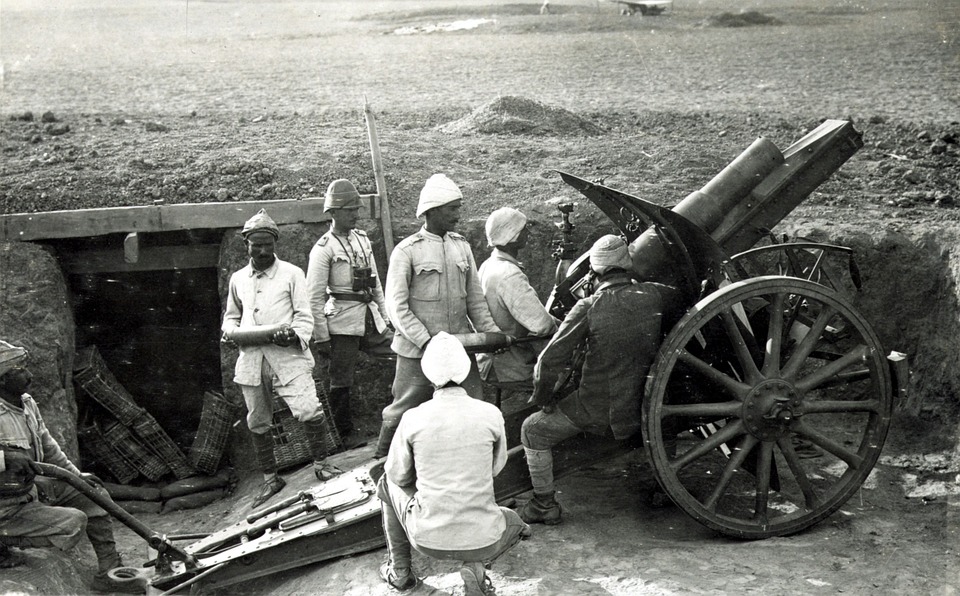
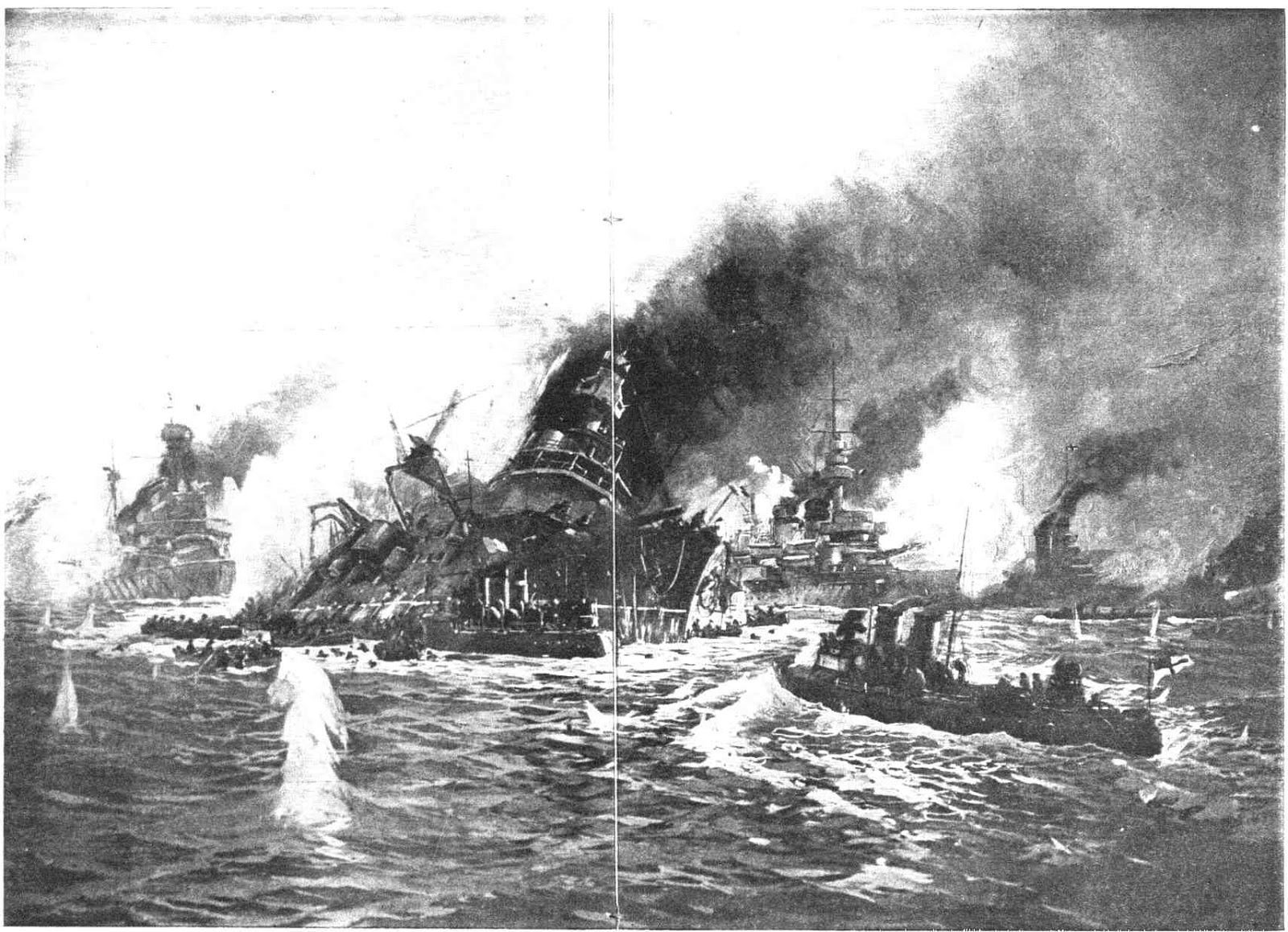



Comments are closed.